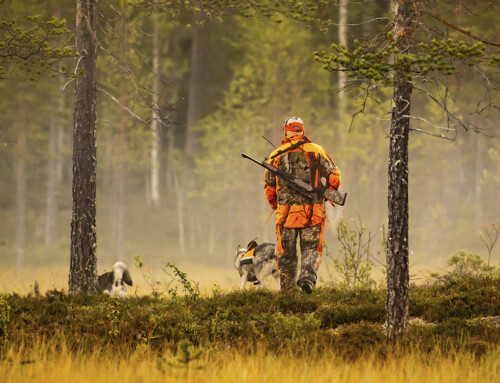Mule deer may not have as much going on above their heads as other members of the deer family, like elk and moose, but judging them in the field can be just as tricky. Accurately field judging a mule deer buck’s trophy status starts with knowing the basics of scoring a mule deer. Under the Boone and Crockett Club’s scoring system, the gross score for a typical mule deer is the sum total of measurements of his inside spread, length of his main beams, length of points, and eight mass or circumference measurements. By definition, a typical mule deer will have four points per side, plus eye guards. Under field conditions we don’t always have the time to pull out a calculator, however, there are a few things we can quickly look for to determine whether a buck would be a record book qualifier.
Click here to download a PDF of the Mule Deer Field Judging Tips |
|---|
Once you’ve located your buck the first thing to check is his overall frame. This is the part where, “If he looks big, he is big” can come into play. A buck’s frame takes into account all factors used in scoring — the inside spread, length of points, length of the main beams, and mass. If you’re looking at a high racked buck with long points and a spread past his ears, you just might be looking at a buck that warrants a full evaluation. As a rule, high, wide, and heavy is what to look for, especially if you’re beyond trophy and thinking record book.
After frame, try and get a clean look at the number of points, fork depth, and symmetry. Any additional or “abnormal” points are subtracted from the typical score. However, if there are enough abnormal points, a buck may be scored as a non-typical and the length of the abnormal points are added to the score. The overwhelming majority of bucks that make the book are five-point bucks (western count — four points per side, plus the eye guards).
A buck with good eye guards (3+ inches) is a bonus. If he is at least a 5×5, including the eye guards, move on to fork depth. Deep forks translate into long tines and high scores. The deeper his forks, front and back, the longer his tines will be.
While sizing up his forks, pay attention to fork symmetry. Do the back forks and front forks match their counterparts on the opposite antler in depth and tine length? In scoring, symmetry is a factor. It is common to see bucks with strong back forks but weak fronts (crab claws) and vise-versa.
Next, check for mass. The mass or circumference of the main beam is also a consideration in scoring, but it can be tough to judge in the field. Mass can be estimated by comparing the circumference of the antler to the buck’s eye. A mule deer’s eye will measure about four inches in circumference. By using his eye as a gauge you can visualize whether his bases and main beams are at least 4-inches or larger. Heavy bases (6+ inches) with this kind of mass carried out through his main beams (5 to 4 inches), means a buck will receive high marks in the circumference category.
Your last check is spread. By now you’ve already accessed his spread when checking his frame, but it will help to pin down a spread measurement before you tally everything. To accurately judge antler spread, we can use a buck’s ear width as a gauge. On the average mature mule deer buck, with its ears in an alert position, he will have an ear span of 20 to 22 inches tip-to-tip. But I have measured large specimens with ear tip to tip spans up to 26 inches. However, if you always use the 20 to 22 inch estimate your buck is less likely to suffer “ground shrinkage.” So with this estimate a buck’s rack past his ears by two inches means an inside spread in the neighborhood of 24 inches — more than enough to put him in the book if the rest adds up.
THE TALLY
After judging all these antler features you should be able to put your buck into one of three categories; obviously a shooter and book contender, a buck on the bubble that may require actually adding up the numbers to see if he will make 180 (B&C typical minimum), or just one heck of a nice buck. If he’s on the edge, you might have to put a number on each feature that counts in final scoring and mentally add them up for a rough score to make your decision. Here, you can use his ears again to estimate each number. On most mature bucks it is approximately eight inches from the white spot at the base of the ear to the ear tip. If you visually superimpose this feature to the antler, you can accurately estimate things like length of main beam, height of the rack and length of the points.
THE TRAPS
There can be a lot of hurdles to overcome in accurate field judging. Getting enough time to look your buck over closely is one. Seeing all the angles so you can count points and access fork depth is another. There are also a few “X” factors that can throw you a curve, like antler coloration and background. Bucks sporting darker horns can appear to have more mass than a tape can give them credit for. Conversely, lighter colored antlers can appear to be thinner than they really are. Background can also trick you. If your buck is standing with snow as a backdrop, antler mass can appear greater. If he is standing in the shadows or in low light, his antlers can also appear to be thinner. Another common illusion in all field judging is the power of your optics. If you are viewing, at fairly close range, with your spotting scope on 60x, even an average 5×5 can look like a monster. Back off your power to a reasonable setting so you can compare him to his body features.






